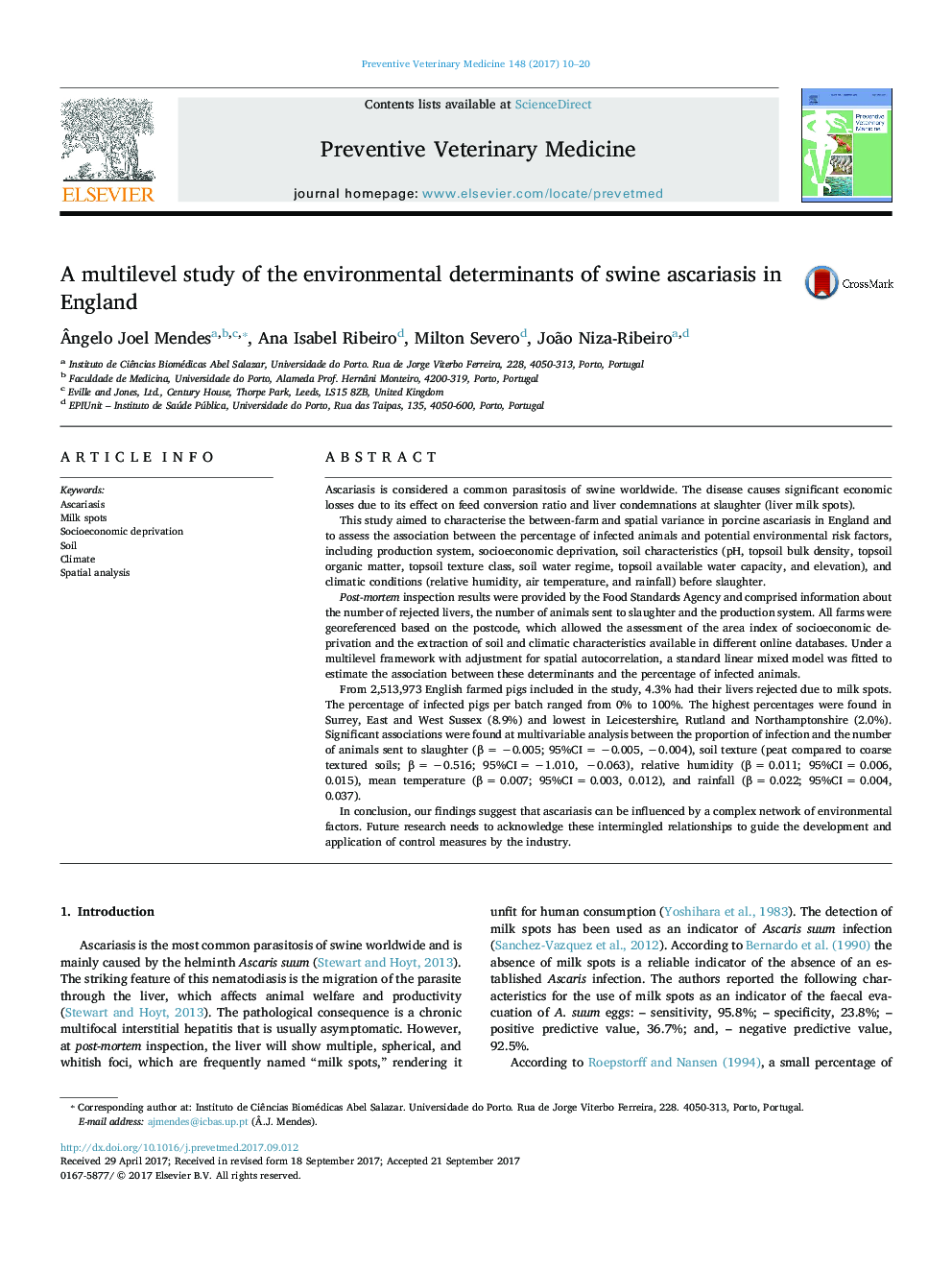| کد مقاله | کد نشریه | سال انتشار | مقاله انگلیسی | نسخه تمام متن |
|---|---|---|---|---|
| 5543507 | 1554142 | 2017 | 11 صفحه PDF | دانلود رایگان |
- Evidence of infection by Ascaris suum was found in 4.3% of the slaughtered pigs.
- Stockmanship is the most important risk determinant in the epidemiology of A. suum.
- Porcine ascariasis is associated with air temperature, relative humidity and rainfall.
- Ascariasis may be more common in pigs grown in more socioeconomically deprived areas.
Ascariasis is considered a common parasitosis of swine worldwide. The disease causes significant economic losses due to its effect on feed conversion ratio and liver condemnations at slaughter (liver milk spots).This study aimed to characterise the between-farm and spatial variance in porcine ascariasis in England and to assess the association between the percentage of infected animals and potential environmental risk factors, including production system, socioeconomic deprivation, soil characteristics (pH, topsoil bulk density, topsoil organic matter, topsoil texture class, soil water regime, topsoil available water capacity, and elevation), and climatic conditions (relative humidity, air temperature, and rainfall) before slaughter.Post-mortem inspection results were provided by the Food Standards Agency and comprised information about the number of rejected livers, the number of animals sent to slaughter and the production system. All farms were georeferenced based on the postcode, which allowed the assessment of the area index of socioeconomic deprivation and the extraction of soil and climatic characteristics available in different online databases. Under a multilevel framework with adjustment for spatial autocorrelation, a standard linear mixed model was fitted to estimate the association between these determinants and the percentage of infected animals.From 2,513,973 English farmed pigs included in the study, 4.3% had their livers rejected due to milk spots. The percentage of infected pigs per batch ranged from 0% to 100%. The highest percentages were found in Surrey, East and West Sussex (8.9%) and lowest in Leicestershire, Rutland and Northamptonshire (2.0%). Significant associations were found at multivariable analysis between the proportion of infection and the number of animals sent to slaughter (β = â0.005; 95%CI = â0.005, â0.004), soil texture (peat compared to coarse textured soils; β = â0.516; 95%CI = â1.010, â0.063), relative humidity (β = 0.011; 95%CI = 0.006, 0.015), mean temperature (β = 0.007; 95%CI = 0.003, 0.012), and rainfall (β = 0.022; 95%CI = 0.004, 0.037).In conclusion, our findings suggest that ascariasis can be influenced by a complex network of environmental factors. Future research needs to acknowledge these intermingled relationships to guide the development and application of control measures by the industry.
Journal: Preventive Veterinary Medicine - Volume 148, 1 December 2017, Pages 10-20
